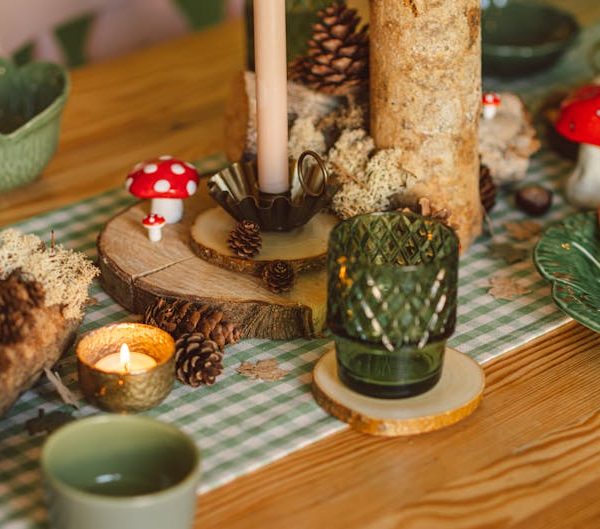1. Blanching and Freezing Basil
Blanching is an underrated secret that helps to retain the nutritional value, color, texture, and aroma of basil. This process involves briefly submerging the basil in boiling water, followed by swift cooling in ice water. This halts the enzyme action which can lead to the loss of flavor and nutrition. Better still, when paired with freezing, blanching can significantly extend the shelf life of your basil, offering you the freedom to experience its culinary delights all year round.
Here’s how you can do it:
Checklist to Blanch and Freeze Basil:
1. Rinse your basil leaves under cold water to remove any grit.
2. Bring your pot of water to a boiling point.
3. Submerge the leaves into the boiling water for two to three seconds.
4. Immediately transfer the blanched leaves into ice water.
5. Dry your basil leaves using a salad spinner or by patting them dry.
6. Place these leaves in airtight containers or resealable plastic bags.
7. Put the containers/bags in a freezer.
Pro Tip: Try to remove as much air as possible from the bags before sealing. More air means more chance of freezer burn.
2. Packaging Basil in Olive Oil
Olive oil serves as a valuable preservative for your basil, capable of maintaining its freshness and enhancing its flavor. This approach gives you basil-infused oil—a dependable standby for impromptu pastas, salads, and dips. Plus, immersing the basil in oil outside refrigeration keeps bacterial issues at bay.
How do you pack basil in olive oil?
Step-By-Step Guide:
1. Rinse your basil leaves and let them dry completely.
2. Place your basil in a jar and pour in enough olive oil to cover the leaves entirely.
3. Seal the container tightly and store it in a cool, dark place.
✅Best Practice: Always use a clean spoon each time you want to remove some basil leaves to avoid contamination. Also, always make sure the remaining leaves are completely submerged in the oil.
3. Drying Basil Leaves
Drying basil leaves is one of the classical methods to extend their shelf life. By eliminating the moisture content, you can store your basil for extended periods without worrying about spoilage, and still manage to keep the distinctive basil flavor intact. Traditionally, the leaves are allowed to air dry at room temperature, but if you’re short on time, there are fast-track options, such as oven and microwave drying.
Let’s weigh the advantages and disadvantages of these methods:
Air drying vs. Oven/Microwave drying
· Air drying: Preserves the most flavor but takes up to 2 weeks.
· Oven/Microwave drying: Much quicker but care must be taken not to burn the leaves, which can give a bitter taste.
Pro Tip: The leaves are suitably dried when they crumble easily on being touched. Always store your dried basil leaves in an airtight container, away from heat and light.
4. Storing Basil in a Jar of Water
Did you know that you can extend the freshness of your basil leaves by storing them like cut flowers in a jar of water? This method is simple but incredibly effective. By giving basil leaves access to water, you’ll ensure that they stay vibrant for a considerably longer period.
Let’s get you started on this:
Step-By-Step Guide:
1. Rinse your basil stems under cold water.
2. Snip off the ends of the stems at an angle.
3. Fill a jar half full with fresh water.
4. Place your basil stems in the jar allowing the leaves to hover above the water.
5. Change the water every few days.
✅Best Practice: While placing basil stems in a jar of water, remember to keep them away from direct sunlight and in a cooler area of your house. The leaves may wilt in high temperatures.
5. Refrigerating Basil
Refrigerating basil is a common method to prolong the freshness of its leaves. It is important, however, to understand the ideal temperature conditions and proper storage method within the refrigerator to prevent wilting or darkening of the leaves.
Here are some succinct points to guide you:
Checklist for Refrigeration of Basil:
1. Clean the basil leaves and allow them to dry completely.
2. Layer the leaves in a paper towel to absorb any residual moisture.
3. Place this bundle gently in a plastic bag but do not seal it completely.
4. Store the bag in the warmest part of your refrigerator, generally the door.
Pro Tip: Regularly check your refrigerated basil for any signs of wilting or discoloration. Remember, dampness is not a friend to basil – keep the leaves as dry as possible before and during refrigeration.
Now that you know these hacks, your basil will be sure to stay fresher, enhancing the flavors in your dishes for longer. Say goodbye to wasted basil and hello to a whole new world of crispy, aromatic, and vibrant leaves!
Key Takeaway:
- Blanching and freezing basil can significantly retain its nutritional value and extend its shelf life.
- Olive oil helps to preserve basil, simultaneously infusing the oil with the herb’s flavor.
- Drying basil leaves allows for long-term storage without losing flavor.
- Storing basil in a jar of water, like cut flowers, can remarkably prolong its freshness.
- Refrigeration, when done correctly, can maintain the freshness of basil leaves without wilting or discoloration.
Remember, the key to these methods is proper execution and careful storage. With these strategies, you’ll not only have fresh basil handy but also enhance its flavors, taking your cooking to the next level.
FAQs
Q: Can dried basil be used as a substitute for fresh basil in recipes?
A: Yes, dried basil can be used as a substitute. However, since it has a more concentrated flavor, you’ll typically need less dried basil than fresh.
Q: Can I freeze basil in olive oil?
A: Absolutely! Freezing basil in oil not only preserves its freshness but also gives you ready-to-use basil-infused oil.
Q: Can I use other oils besides olive oil for packing basil?
A: Yes, but olive oil is recommended due to its stability and flavor-enhancing properties.
Q: How long can I keep basil in a jar of water?
A: Basil can stay fresh for about a week. However, it’s best to consume it as soon as possible to enjoy its peak flavor.
Q: What should I do if my refrigerated basil shows signs of wilting?
A: If you spot early signs of wilting, consider using these leaves immediately. If wilting is extensive, it might be better to discard those leaves.
Feel free to explore more articles on our website, and don’t forget to share this helpful piece with friends and family who appreciate the fragrant charm of fresh basil!





